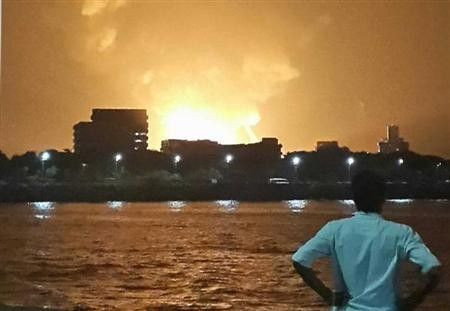China Makes Headway in Developing Supersonic Submarine: Underwater Travel May be Possible in the Future
Imagine Traveling Underwater to Any Part of the World in a Few Hours

A supersonic submarine that could cover 9,900 kilometres from Shangai to San Francisco in less than two hours, has been developed by Chinese scientists. A team of experts at the Harbin Institute of Technology's Complex Flow and Heat Transfer Lab have developed a technology that makes a submarine or a torpedo travel at extremely high speeds underwater.
Reports from the South China Morning Post said that for rapid underwater travel a complicated air "bubble" needs to be created which professor Li Fengchen of fluid machinery and engineering said that his team's innovative approach could achieve.
"We are very excited by its potential," he said.
The Soviet military developed a technology called "Supercavitation" during the Cold War. To avoid problems caused by water drag this technology helps in enveloping a submerged vessel in an air bubble. A torpedo called Shakval was able to reach a speed of more than 370 kilometers using this technology, which is faster than the usual torpedoes.
Li said, to reach high speeds the team of Chinese scientists found a novel way to resolve problems to produce and keep up the air bubble with a wheel placed within it to avoid direct contact with water.
This technology is as of now restricted to torpedoes. Due to their limited ability to turn they were fired in a straight line.
The supercavitation submerged vessel will constantly shower itself with a liquid membrane on its own surface.
Li said though the membrane would wear away due to water it would reduce the water drag at low speed. After the vessel reaches a speed of 75 kilometers per hour it would enter the supercavitation state. The liquid on the surface of the vessel will help in the steering, with perfect control different levels of friction could be achieved on different parts of the vessel.
"Our method is different from any other approach, such as vector propulsion," or thrust created by an engine, Li said. "By combining liquid-membrane technology with supercavitation, we can significantly reduce the launch challenges and make cruising control easier," he told the Post.
However, for the technology to become feasible many problems have to be addressed, he said.
A powerful underwater rocket engine has to be developed along with resolving control issues to give the vessel a longer range.
The technology could be beneficial not only to the military but also to civilian underwater transport or water sports like swimming.
"If a swimsuit can create and hold many tiny bubbles in water, it can significantly reduce the water drag; swimming in water could be as effortless as flying in the sky," he said.
Other than Russia, countries like Germany, the United States and Iran have been conducting research in the field of supercavitation technology.
For decades the scientific community were troubled due to less progress in resolving scientific and engineering challenges, said Professor Wang Guoyu, head of the Fluid Mechanics Laboratory at Beijing Institute of Technology. He is the head of a state funded project on supercavitation.
"The size of the bubble is difficult to control, and the vessel is almost impossible to steer," he said.
While steering a vessel during supercavitation, due to the greater density of liquid the vessel could break a fin if it touches the water.
Research projects on supercavitation are been undertaken by scientists throughout the world. However, latest progress are unclear because these are military secrets.





















